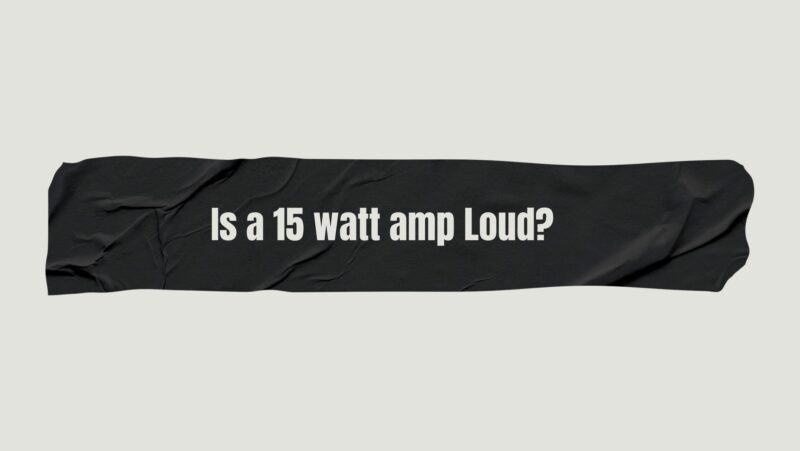In the realm of music and sound amplification, the question of loudness holds a perpetual intrigue. One often pondered inquiry is, “Is a 15-watt amp loud?” This seemingly straightforward question unveils a rich tapestry of factors interwoven with physics, technology, and human perception. This article embarks on a journey to unravel the complexities surrounding a 15-watt amplifier’s potential for loudness, delving into the realms of amplifier power, efficiency, acoustic environments, and musical context.
The Dynamics of Amplifier Power
Amplifier power is a critical element in the creation of sound. Measured in watts, it is the force that propels electrical signals into audible sound waves through speakers. However, the relationship between amplifier power and perceived loudness is far from linear. The human auditory system follows a logarithmic scale of loudness perception, where doubling the perceived loudness requires roughly ten times the amplifier power. Therefore, while a 15-watt amp may be louder than a 5-watt one, the perceived increase in loudness might not be as substantial as the numerical difference suggests.
The Role of Speaker Efficiency
An amplifier’s true potential is realized through its partnership with speakers. Speaker efficiency, defined as the ability to convert electrical power into sound output, is a pivotal aspect. Highly efficient speakers can translate a 15-watt input into significant sound output, enhancing perceived loudness. Conversely, less efficient speakers might require more power to produce the same level of sound. Therefore, when assessing the loudness of a 15-watt amp, considering the efficiency of the connected speakers is paramount.
Acoustic Environments and Perception
The environment in which sound propagates plays an integral role in loudness perception. Room size, shape, and acoustic properties can significantly influence how sound waves interact and travel. In a confined, acoustically optimized space, a 15-watt amp can appear remarkably loud, filling the room with sound. Conversely, in a larger, open environment with sound-absorbing surfaces, the same amp might struggle to achieve the same perceived volume. Our perception of loudness is also influenced by the presence of ambient noise, the listener’s distance from the sound source, and individual hearing sensitivity.
Musical Genre and Dynamic Range
Loudness is not a universal constant; it is contingent upon the context of the sound being reproduced. Different musical genres possess diverse loudness requirements. A 15-watt amp might excel at rendering the nuances of acoustic performances or jazz music, where dynamic range and subtlety are paramount. However, genres with pronounced dynamic shifts and high-energy passages, such as rock or electronic music, might push a 15-watt amp closer to its limits. This can lead to the introduction of distortion, altering both the perceived loudness and tonal quality.
Pushing the Limits: Distortion and Compression
As an amplifier approaches its maximum power output, it enters a realm where distortion and compression can become prominent. Distortion, often undesirable, can be perceived as harsh and disruptive. Compression, on the other hand, involves reducing the dynamic range to maintain a more consistent loudness level. While controlled compression can enhance perceived loudness, excessive amounts can lead to an unnatural and fatiguing listening experience. This brings forth the consideration that a 15-watt amp’s loudness potential is not solely about sheer power, but also about maintaining fidelity and control.
Contextualizing the 15-Watt Amp
The notion of a 15-watt amp’s loudness is a multifaceted concept. Its audibility is molded by speaker efficiency, room acoustics, musical content, and the potential introduction of distortion. In a bedroom studio, a 15-watt amp might offer more than enough volume for personal practice and recording. In a small live performance setting, it could hold its ground against other instruments and achieve a desirable balance. However, in a large concert hall, a 15-watt amp might require additional amplification or support to meet the demands of the audience.
Conclusion
In the ever-evolving landscape of sound amplification, the perceived loudness of a 15-watt amp is an intricate interplay of science, art, and technology. While it might not be universally considered “loud,” the context within which it operates significantly shapes its audibility. The true essence of a 15-watt amp’s potential resides in its ability to strike a harmonious equilibrium between power, efficiency, and fidelity. As we continue to explore the boundaries of sonic expression, the answer to whether a 15-watt amp is loud reverberates with the resounding phrase, “It’s all about the context.”


